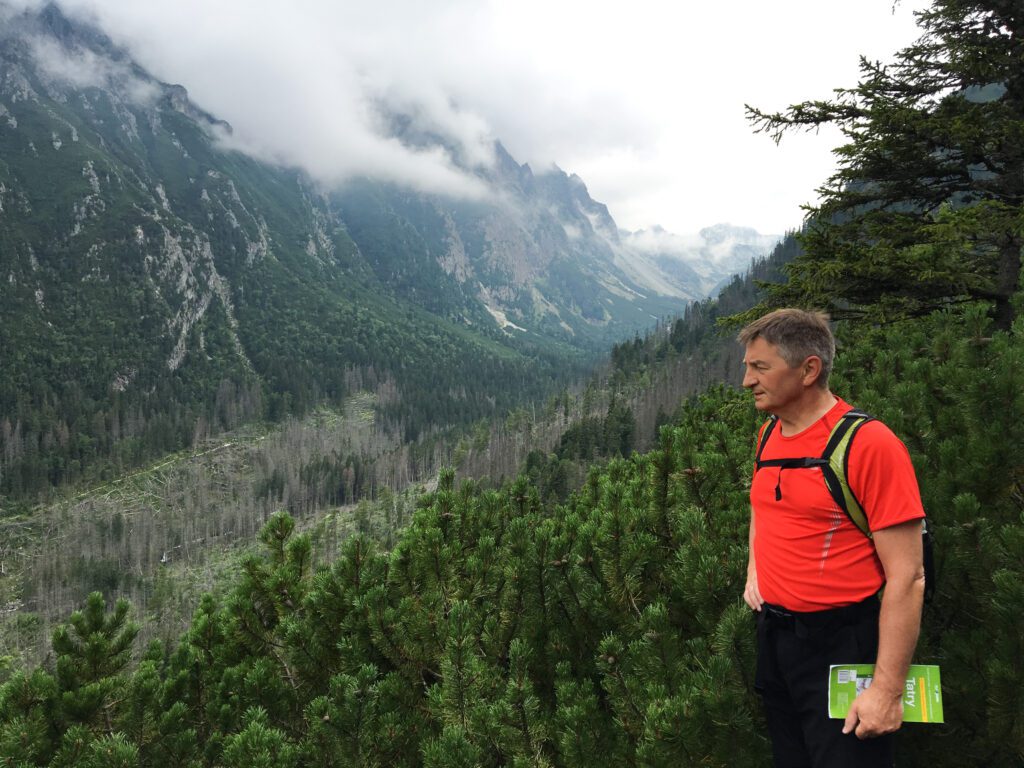There is a line of commitment that connects us to those,
who have given us what we have; and our concern for
the future is an extension of that line
Roger Scruton, Green philosophy
See the trees, don't see the forest, or see the trash, don't see the trees? Carpathians need our help so they don't die buried in trash.
- Carpathians without plastic! Plastics have become such a serious problem for the Earth that appeals alone are not enough. More and more depends on regulations on the national and international level. I have received assurances that the governmental project increasing the level of recycling will soon be submitted to the Sejm - assures Marek Kuchciński.
The EU's Single-Use Plastics Directive, introduced in 2021, aims to reduce plastic pollution in seas and oceans. It bans single-use plastic products, but also aims to increase recycling rates. By 2023, plastic containers will have to be made of at least 25 percent recycled material. In 2030, 30 percent, and selective collection of plastic bottles at 77 percent with a gradual increase to 90 percent by 2029. Why is this important?
Protect what is most precious
Until recently, we thought that the Carpathians were powerful, omnipotent and eternal. After all, it is one of the main mountain ranges of our continent. The largest refuge of large predatory mammals and rare species of birds in Central Europe. Due to the vastness and shape of the surface they play a huge role in shaping the climate of a large part of Poland.
Every year, however, this natural resource must fight for its survival
Let us look, for example, at the Carpathian Primeval Forest, which is very important for the region. Only 3% of its area is protected. 65 thousand m3 of trees are harvested annually. It is worth remembering that apart from the Białowieża Forest, the Carpathian Forest is the most valuable forest complex in Poland.
A region that serves man as a reservoir of water, clean air. The region that feeds and delights us also needs conscious care. To paraphrase President Kennedy's famous statement, we can say today: "Ask not what the Carpathians can do for you, ask what you can do for the Carpathians."
What can we do for the Carpathians?
Sometimes we don't realize how seemingly small actions can set off a whole reaction of events.
- Plastic has been dumped into rivers for about 70 years. In the sediments and river waters it has accumulated over that time in very large quantities indeed. A plastic bottle that someone throws into a stream in the Tatra Mountains may turn into microplastic after a dozen or so years, flow down and be drunk by someone, for example in Warsaw," explains Maciej Liro, Ph.
A researcher from the Institute of Nature Conservation of the Polish Academy of Sciences received a grant through the National Science Center. His goal is not only to show which places in river valleys are most polluted by plastic, but also to explain why this happens on a local and regional scale.
A chain of mountains and interconnectedness
The scale of the challenge is enormous. The Carpathian Mountains are a mountain chain about 1300 km long. It begins at the Danube near Bratislava at the mouth of the Morava River and runs in an arc curving to the north and east, and also ends at the Danube at the so-called Iron Gate. To Poland belongs only the northern ranges of the Western Carpathians and a small piece of the Eastern (Bieszczady). They occupy a total area of over 6% of the country. To protect the Carpathians, the cooperation of three voivodships is needed: Podkarpackie, Małopolskie and Śląskie. In total, in the region there are 6 national parks, 12 landscape parks, 3 biosphere reserves and over 120 nature reserves.
Carpathians are getting better protected
In our analysis we consider only the Podkarpackie Voivodeship. It takes the second place in the country in terms of forest cover (after Lubuskie Voivodeship). The problem of legally protected area is often discussed. In this respect Podkarpackie occupies 5th place. (after Warmińsko-Mazurskie, Mazowieckie, Wielkopolskie and Małopolskie). In the first five there are two "Carpathian" provinces. So we have huge areas that are worth taking care of.
However, it is not easy, given the rate of development of the region. According to CSO data (the latest is for the year 2020). The amount of waste generated (excluding municipal waste) increased by 31.9%. In 2020, most waste was generated from construction, repair and dismantling of buildings and road infrastructure.
Podkarpackie selects waste
In Podkarpacie, we are getting better at separating waste. This allows them to be recycled later. The increase in municipal waste collected selectively was in 2020. 23,1%.
The voivodeship is first of all the "green lungs". We do not poison them, because only 1.4% of the gaseous pollutants emitted into the air in Poland originated from Podkarpackie, and 3.8% were dust pollutants.
National parks also care about cleanliness
A huge job is done by National Parks. They have to protect not only flora and fauna, but also educate. Also on the issue of environmental protection and the fight against littering. A good example is the Tatra National Park, which last year conducted an unusual action "Litter! Who saw it!" (the cost was over 1.2 million PLN). Tens of thousands of tourists in the Tatra Mountains and millions all over Poland thanks to skilfully selected media learned about the impact of litter on the environment, wildlife and human health.
The most important thing in ecological actions is to arouse people's imagination, encourage them to act even on a micro scale. These are often very small changes in everyday life and leisure time. Conscious consumption, waste segregation, using reusable packaging and promoting the idea of zero waste - this is what he taught about during the action "Garbage! Who saw it!?" TPN.
- We can see the effects of that. Tourists very often pick up litter if they see it on the trail, which is a very positive phenomenon," explains Szymon Ziobrowski, director of the Tatra National Park.
Bears don't like monkeys
Ziobrowski knows a lot about ecology. He is a graduate of the Faculty of Mining Geodesy and Environmental Engineering at the AGH University of Science and Technology, with a specialization in environmental protection in planning and management.
- Recently, we have seen a change in the structure of garbage. There is a lot of small glass bottles, so called monkeys. Unfortunately they are easy to throw, so they land far away from the trails - adds the TPN director.
The park is eager to educate people. It has outstanding specialists and experience to do so. However, it constantly needs resources to carry out such campaigns. Another problem is "deterrent" measures. As long as parks cannot impose severe penalties on tourists who devastate nature, there will be many people willing to cross monkeys with bears.
Bieszczady Mountains hidden in a pizza boxy
The problem of litter in the parks is largely under control, thanks to the dedication of the staff. This is confirmed, among others, by Ryszard Prędki, director of BdPN. He assures that park employees are coping with heavy tourist traffic, for example by increasing the number of people working in the field. They haven't observed any widespread littering on the trails. These are rather isolated cases.
Patotourism takes place to a greater extent outside protected areas. This is confirmed by the employees of the Cisna Forest District. They shared their thoughts on their social media profile after visiting the "Jeleni Skok" lookout tower.
- Dear people, what wasn't there - bottles, cans, pizza wrappers, used pampers and many, many other "treasures". The worst thing was that the rain shelter had been turned into a dumpster, which instead of providing shelter from the bad weather, was drowning knee-deep in garbage. Someone had even lined the entrance to the shelter with branches to accommodate more trash.
Quo vadis Karpaty?
- Will garbage cover the Carpathians? It depends only on us. We have to take care of it not only on holidays. It is not that difficult. During a trip to the mountains, remember that the lack of trash garbage cans in the forest is not a result of laziness of the relevant services, but their care for nature. Garbage cans attract animals, which look for food in them. Firstly, they can get poisoned by it, secondly, they spread the empty containers around. We have pockets, backpacks and bags instead. We can take the empty packaging to the place where we live. It's easier to take segregated waste from there,' argues Marek Kuchciński.
mo



